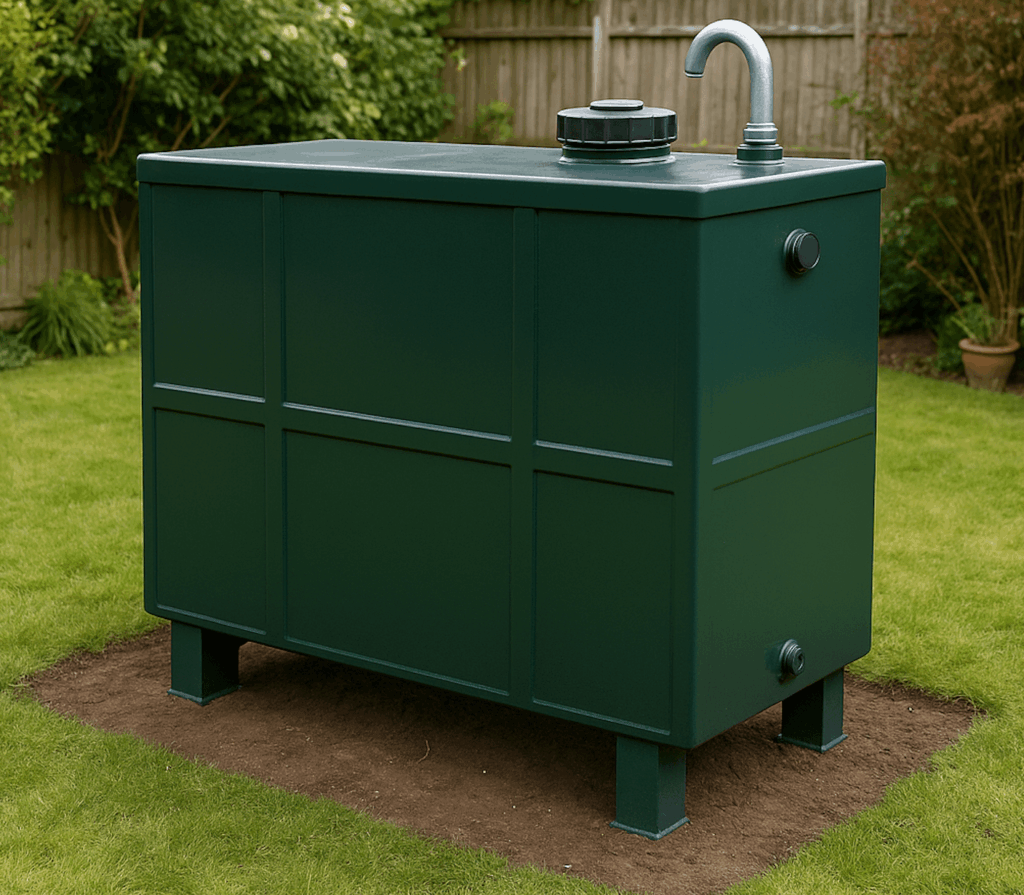Choosing between a steel or plastic oil tank is an important decision for UK homeowners and businesses that require oil storage. Each type has unique features and benefits to create advantages for specific situations.
This comprehensive guide will help you decide which oil tank is right for you by comparing steel and plastic oil tanks. It will highlight the plastic oil tank life expectancy and the steel oil tank lifespan to help you make an informed choice. It will outline other key factors to consider, such as cost, maintenance requirements and environmental considerations.
Steel or plastic oil tanks: Key factors to consider
When deciding between a steel or plastic oil tank, there are several key factors to consider to help you evaluate which tank you need for your situation. These are durability and lifespan, cost, maintenance requirements, environmental considerations and the security and strength of the oil tank.
Durability and lifespan
Steel oil tanks are known for their robustness and longevity. If it is well-maintained and looked after, a steel oil tank’s lifespan can reach up to 30 years. This depends on environmental conditions, which could make them prone to corrosion.
Shop now: 5,000 litre steel bunded diesel fuel tank from QuickTanks
A plastic oil tank’s life expectancy is 20 years. Constructed from UV-stabilised, corrosion-resistant polyethene, the plastic oil tank also needs good maintenance to reach the 20-year life expectancy. Plastic oil tanks often hold up well against harsher weather conditions, which could be a deciding factor if they are located in an area open to the elements.
Plastic oil storage tanks are often UV-stabilised, meaning they can withstand prolonged exposure to sunlight without degrading. Many also offer thermal insulation properties, which help maintain the oil’s consistency in extreme temperatures, reducing the risk of freezing or overheating.
Shop now: 1,360 litre horizontal bunded plastic heating oil tank from QuickTanks – only £1,299.99 incl. VAT
Cost
Steel oil tanks are typically more expensive upfront, but their durability can offset the initial cost. Plastic tanks are typically cheaper and more affordable than steel tanks, making them a budget-friendly option for UK households and businesses.
Maintenance requirements
Steel tanks require regular maintenance to prevent corrosion, including inspections for rust and applying protective coatings. They may also need more frequent cleaning to remove sludge.
Plastic tanks are low-maintenance due to their corrosion-resistant nature. Routine inspections and cleaning are still necessary, but they require less upkeep than steel tanks.
Transport considerations
Some steel oil tanks may require specialist machinery, which could make it difficult to get to some remote locations or tight spaces. The plastic oil tanks are lightweight and have handholds to make it easier to carry and move through to remote locations.
Security and strength
Steel’s toughness can help turn thieves away, as cutting through it is far more difficult and noisy than trying to break a plastic tank. Therefore, it might be worth going for a steel oil tank if you place it in exposed or high-risk areas. The police have provided tips on preventing oil tank theft.
When to choose a steel oil tank
When choosing between a steel or plastic oil tank, you may lean towards steel in the following situations:
- Commercial or industrial use: Steel tanks are better suited for large-scale operations requiring high capacity and durability.
- High-security areas: If vandalism or theft is a concern, steel’s strength provides added protection and acts as a deterrent against thieves.
- Long-term investment: If you plan to stay in your property or industrial site for decades, the steel oil tank lifespan makes it a cost-effective choice.
- Harsh environments: Steel tanks withstand extreme weather better than plastic, provided corrosion is managed.

When to choose a plastic oil tank
When choosing between a steel or plastic oil tank, you may lean towards plastic in the following situations:
- Domestic use: Plastic tanks are ideal for homes with moderate oil heating needs.
- Budget constraints: If upfront costs are a priority, plastic tanks are more affordable.
- Coastal or humid areas: The plastic oil tank life expectancy is unaffected by rust, making it perfect for damp UK regions.
- Ease of installation: Plastic’s lightweight nature simplifies setup, especially in tight spaces.

Practical advice on choosing the right oil tank for you
When choosing steel or plastic oil tanks, you must consider several factors within your own scenario. You will need to consider your requirements, such as capacity and budget. You’ll also need to check your local regulations to ensure your decision meets those requirements.
Think ahead to things like delivery, installation and future maintenance once the oil tank is up and running. You’ll also need to assess the weather conditions, including whether or not the tank will be exposed to regular sunlight. If you’re still unsure, it’s worth seeking professional advice.
Deciding between a steel or plastic oil tank depends on your budget, property type, and long-term goals. Steel tanks offer durability and security, with a steel oil tank lifespan of 15–30 years, but require more maintenance and higher costs. Plastic tanks are affordable and corrosion-resistant, with a plastic oil tank life expectancy of 10–20 years, but they’re less durable against physical damage.
You can choose the tank that best suits your needs by weighing factors like cost, maintenance, and environmental impact. Now that you know which tank to choose, explore our steel and plastic oil tanks range. If you need any advice on choosing the right oil tank for you, our friendly team is on hand and ready to help. Just get in touch.

